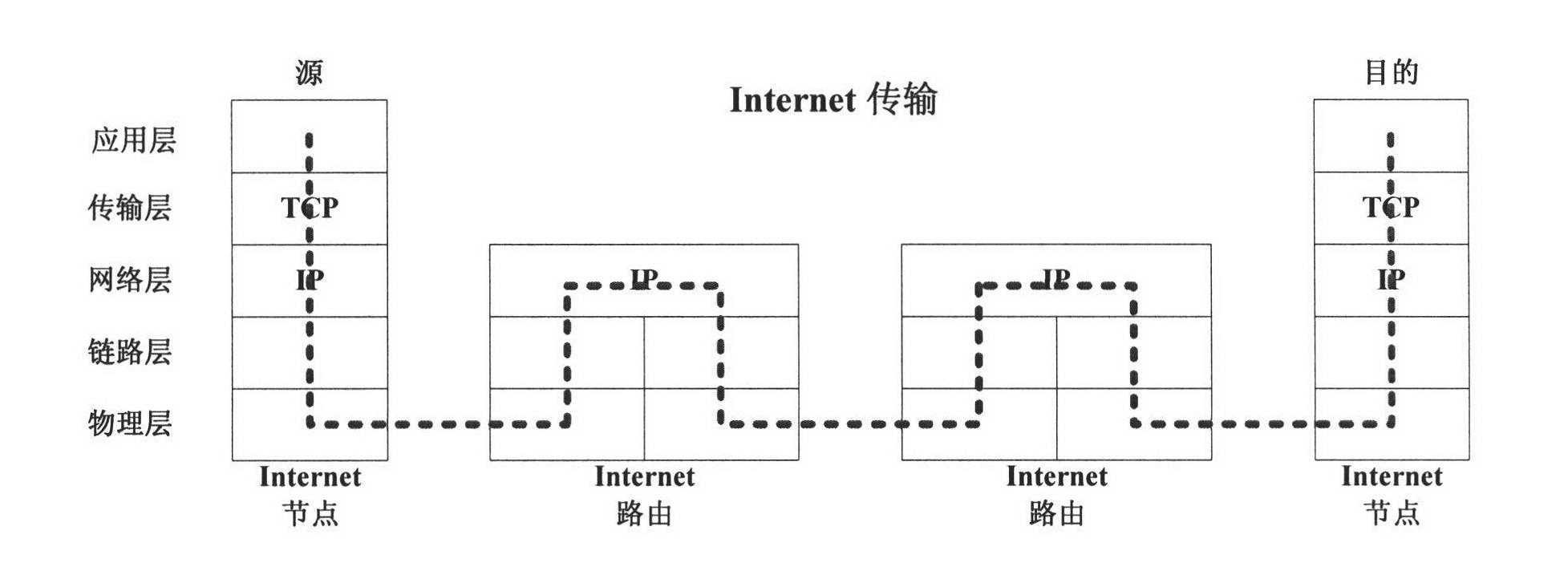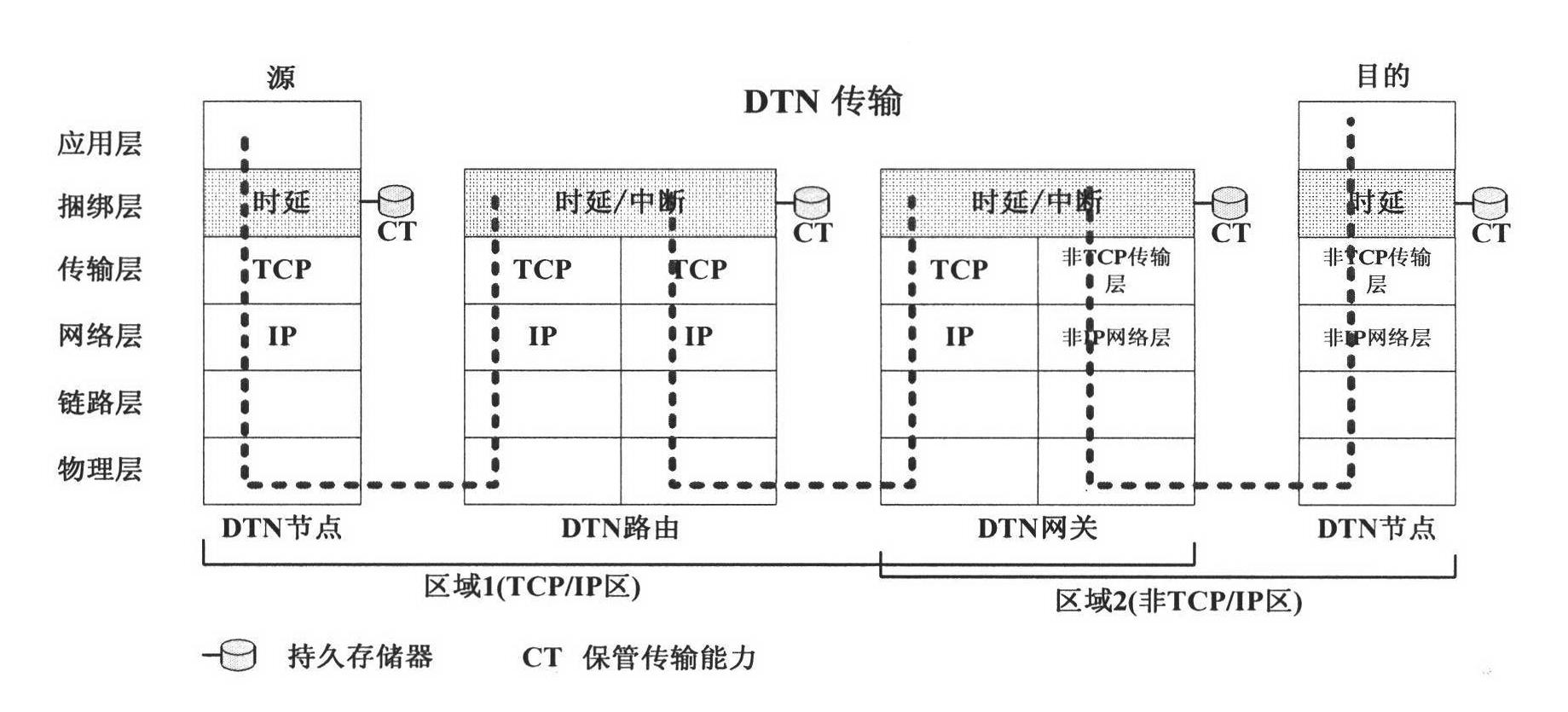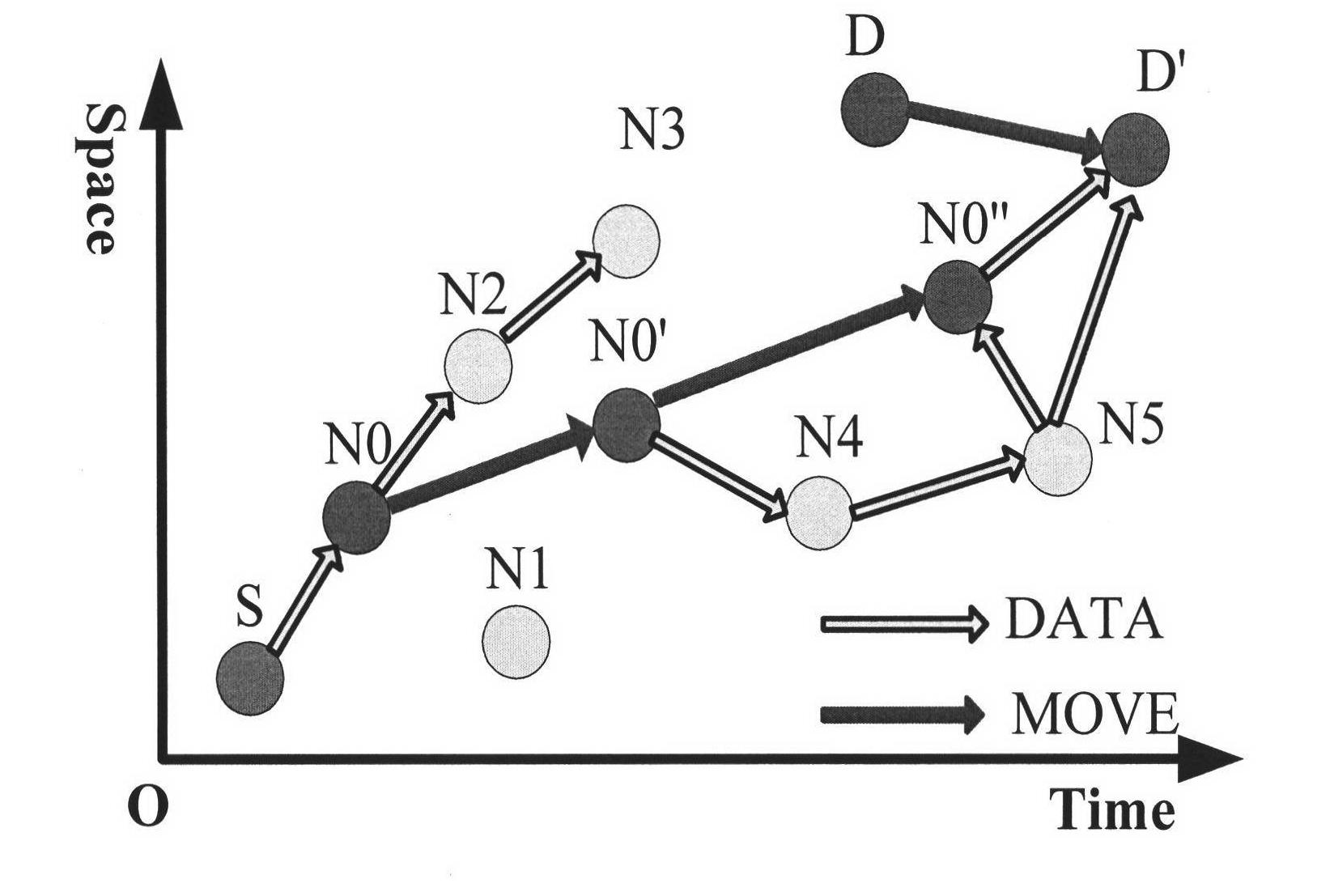DTN asynchronous routing algorithm based on node position projection
A node location and node technology, applied in data exchange networks, digital transmission systems, electrical components, etc., can solve problems such as loss of important information, loss of troops, and impact on communications
- Summary
- Abstract
- Description
- Claims
- Application Information
AI Technical Summary
Problems solved by technology
Method used
Image
Examples
Embodiment Construction
[0068] The present invention will be further described below in conjunction with the accompanying drawings.
[0069] by image 3 For example, the entire network consists of 2 mobile nodes and 6 stationary nodes. As time goes by, the network topology evolves continuously, and the entire network is a dynamic network that evolves with time.
[0070] Communication purpose: the data source node S sends information to the destination node D.
[0071] Transmission process: S sends the data to the intermediate node NO, and NO retains a copy while forwarding it to the node N2, and then moves towards the node, adopting the "storage-carry-forward" routing method; the node NO is moving During the process, it encounters node N4, forwards the data, and then continues to run until it moves within the range of the destination node D. At the same time, the data arrives at the N5 node after being forwarded by N4. Since N5 cannot move arbitrarily, it adopts the routing mode of "store-wait-forw...
PUM
 Login to View More
Login to View More Abstract
Description
Claims
Application Information
 Login to View More
Login to View More - R&D
- Intellectual Property
- Life Sciences
- Materials
- Tech Scout
- Unparalleled Data Quality
- Higher Quality Content
- 60% Fewer Hallucinations
Browse by: Latest US Patents, China's latest patents, Technical Efficacy Thesaurus, Application Domain, Technology Topic, Popular Technical Reports.
© 2025 PatSnap. All rights reserved.Legal|Privacy policy|Modern Slavery Act Transparency Statement|Sitemap|About US| Contact US: help@patsnap.com



